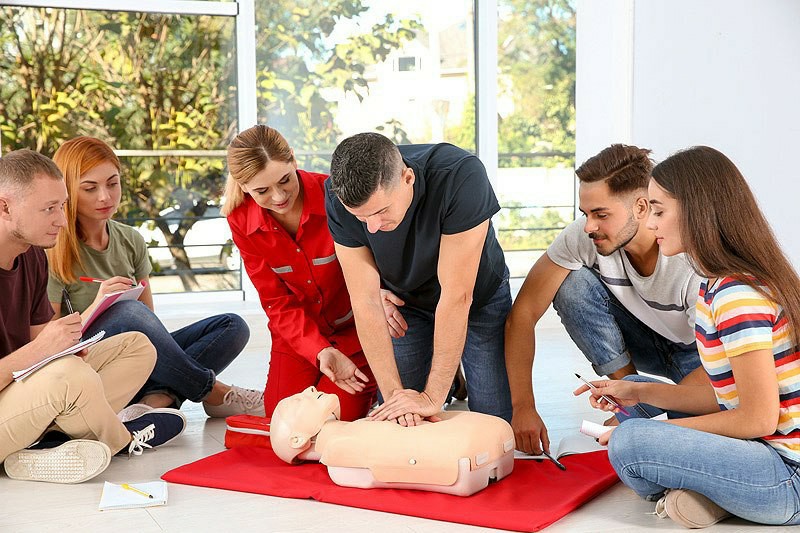Empower Your Workforce: The Indispensable Benefits of First Aid & CPR Training
In today's fast-paced environment, emergencies can arise without warning, making it essential for businesses to ensure their employees are prepared. Fulfilling this need is the **First Aid and CPR training**, a crucial component of workplace safety and compliance. This blog post explores the fundamental benefits of obtaining **First Aid Certification** and enrolling in comprehensive **First Aid Courses** that empower individuals to respond effectively in emergencies.
The Importance of First Aid and CPR Training for Safety and Emergency Preparedness
First Aid and CPR training equips individuals with life-saving skills that can make a significant difference during emergencies. Whether it's a minor workplace injury or a life-threatening situation, having trained personnel on site can substantially reduce the potential for severe outcomes. This proactive approach promotes a culture of safety and preparedness, acting as a crucial line of defense in any crisis.
Critical First Aid Skills Every Workplace Should Implement
- Basic Emergency Response: Understanding how to assess an emergency situation, call for help, and provide immediate assistance can save lives. Knowing how to control bleeding, manage shock, or provide assistance to someone suffering from a heart attack is foundational to any effective First Aid program.
- Injury Management: Learning to treat workplace injuries such as cuts, burns, or sprains can vastly enhance safety protocols. Immediate attention can mitigate further complications and speed up recovery times.
- Communication Skills: An effective emergency responder must relay critical information clearly to emergency services and colleagues. Training emphasizes the importance of communication during emergencies.
Understanding CPR: Essential Techniques for Workplace Emergencies
Cardiopulmonary Resuscitation (CPR) is a life-saving technique that can be administered when someone stops breathing or their heart stops beating. Here are some key components:
- Compression Techniques: Proper chest compressions can maintain blood circulation, buying time until emergency services arrive.
- Rescue Breaths: Understanding when and how to perform rescue breaths during CPR can restore breathing in a victim.
- Using an AED: Automated External Defibrillators (AED) are vital in many emergencies; knowing how to use one can save lives.
How First Aid Certification Ensures Workplace Health & Safety Compliance
Employers are obligated to create a safe work environment under various health and safety regulations. By completing a **First Aid Course**, companies can ensure compliance with these requirements. Certification not only meets legal obligations but also demonstrates a commitment to employee well-being. Here’s how:
- Risk Management: A certified workforce can identify potential risks and implement prevention strategies, minimizing workplace incidents.
- Reduced Liability: Keeping trained staff can reduce liability in the event of an accident, showcasing that you take safety seriously.
Emergency First Aid Procedures: Step-by-Step Guide for Immediate Action
Understanding how to act in emergencies is crucial. Here’s a brief guide:
- Assess the Situation: Ensure the scene is safe before approaching.
- Call for Help: Contact emergency services if necessary.
- Provide Assistance: Administer First Aid as trained.
- Monitor: Keep an eye on the victim's condition until assistance arrives.
Choosing the Best First Aid Training Course for Your Employees
When selecting a **First Aid Course**, consider factors such as the course content, duration, delivery method, and trainer qualifications. Many organizations offer online options that provide flexible learning tailored for your team’s schedules. Some popular choices include:
- Basic First Aid Course: Covers essential skills.
- Emergency First Aid Training Course: Focuses on immediate emergency response.
- Online First Aid Essentials: Perfect for busy employees needing flexibility.
Advantages of Online First Aid and CPR Training for Busy Teams
Online courses offer several advantages:
- Flexibility: Employees can learn at their own pace, making it easier to fit training into busy schedules.
- Accessibility: Online platforms can be accessed anytime, anywhere, enhancing convenience.
- Cost-Effective: Reduce travel and accommodation costs associated with in-person training.
Conclusion & Call to Action
First Aid and CPR training is not just a regulatory requirement but a crucial investment in the safety and well-being of your employees. Empower your workforce with the critical skills they need to respond effectively in emergencies, enhancing safety across the board.
Ready to take the next step? Enroll your team in a certified **First Aid & CPR training course** today! For more details, please visit Ireland Safety Training or contact us at [email protected].



 349,500 Offered Certificates
349,500 Offered Certificates
 24/7 Online Training
24/7 Online Training
 Money Back Guarantee
Money Back Guarantee
 Fully Accredited Courses
Fully Accredited Courses
